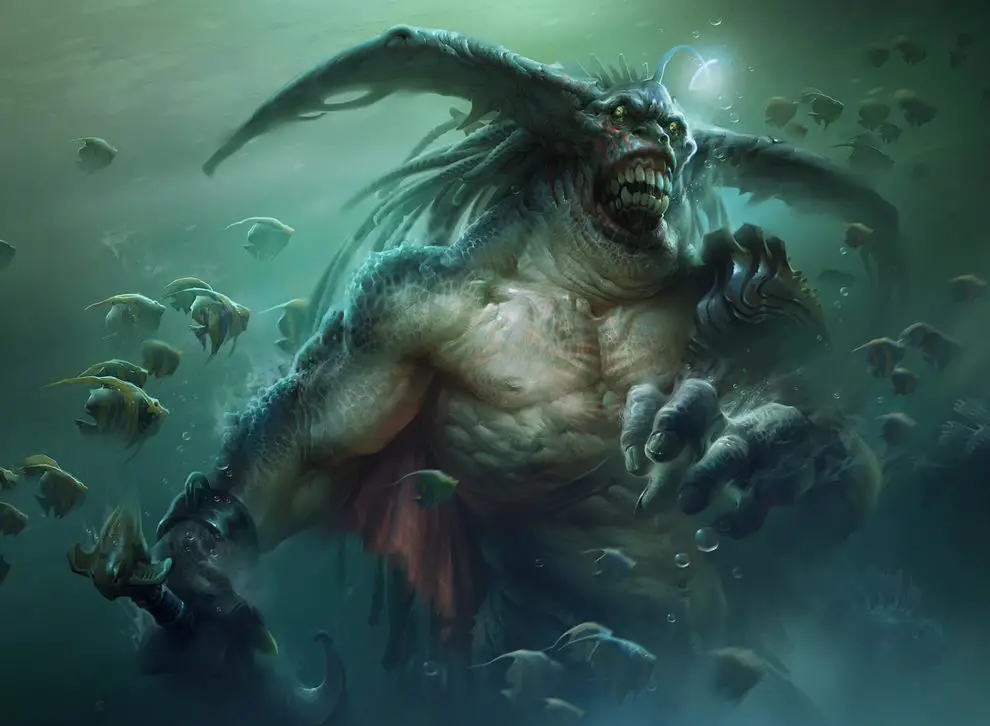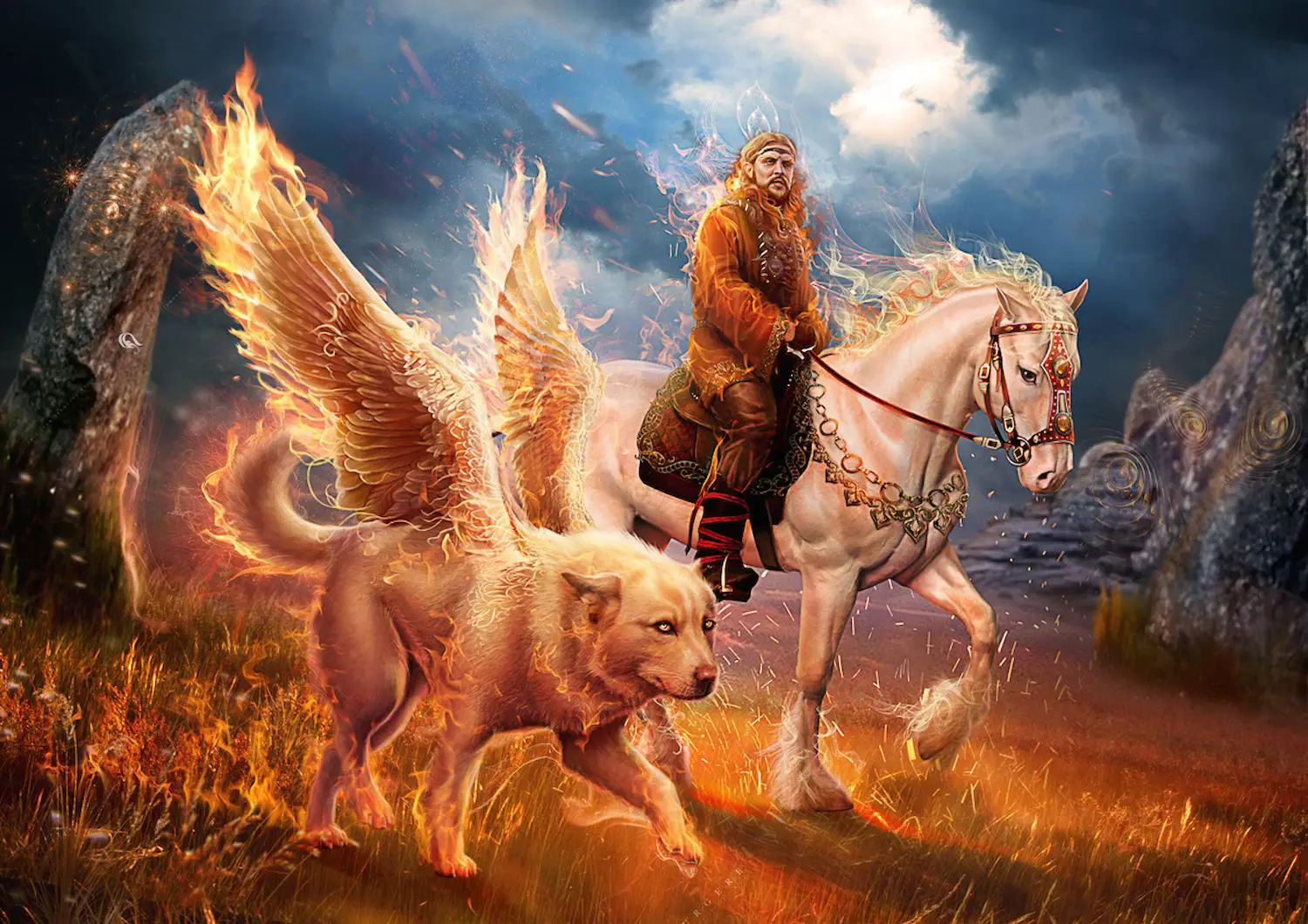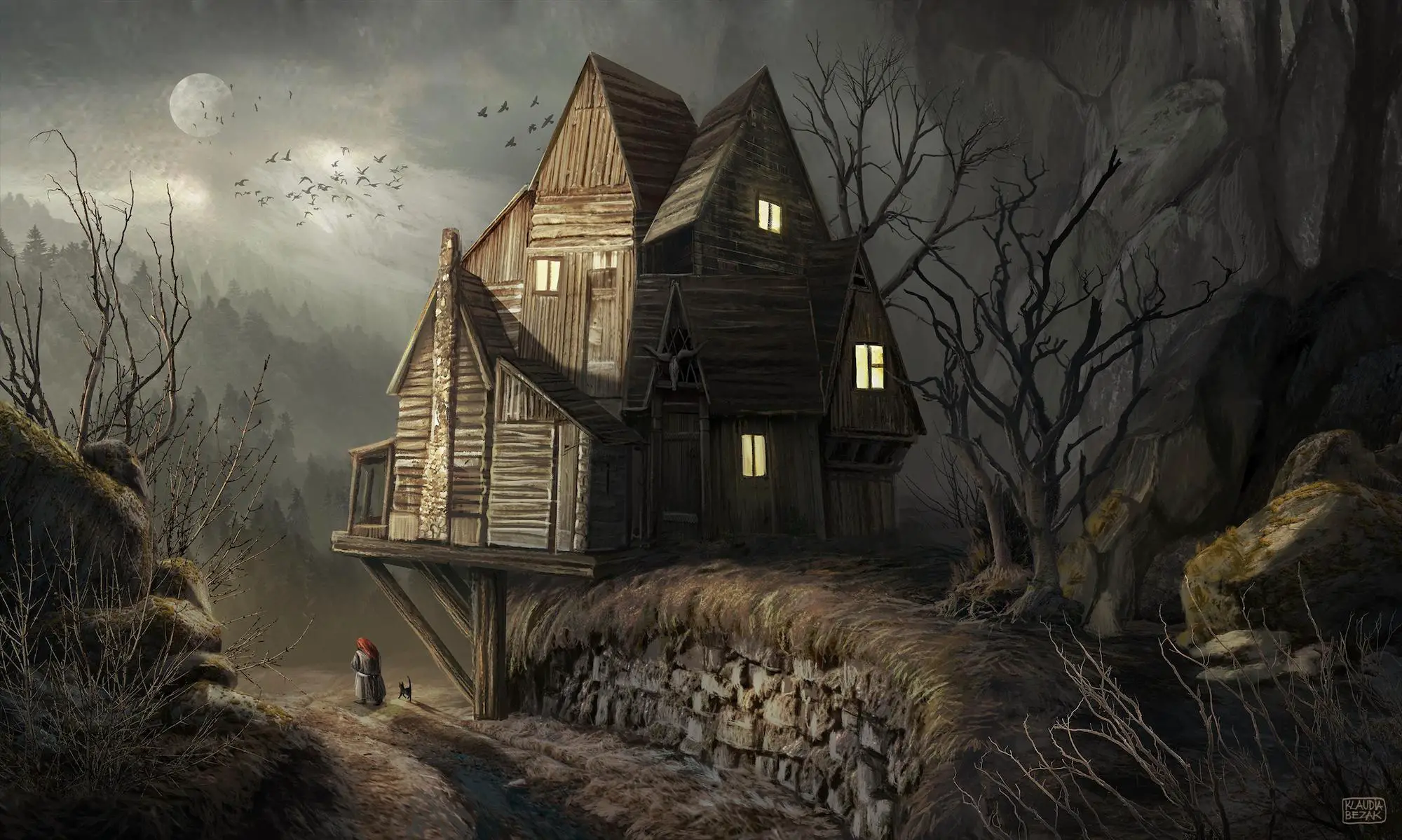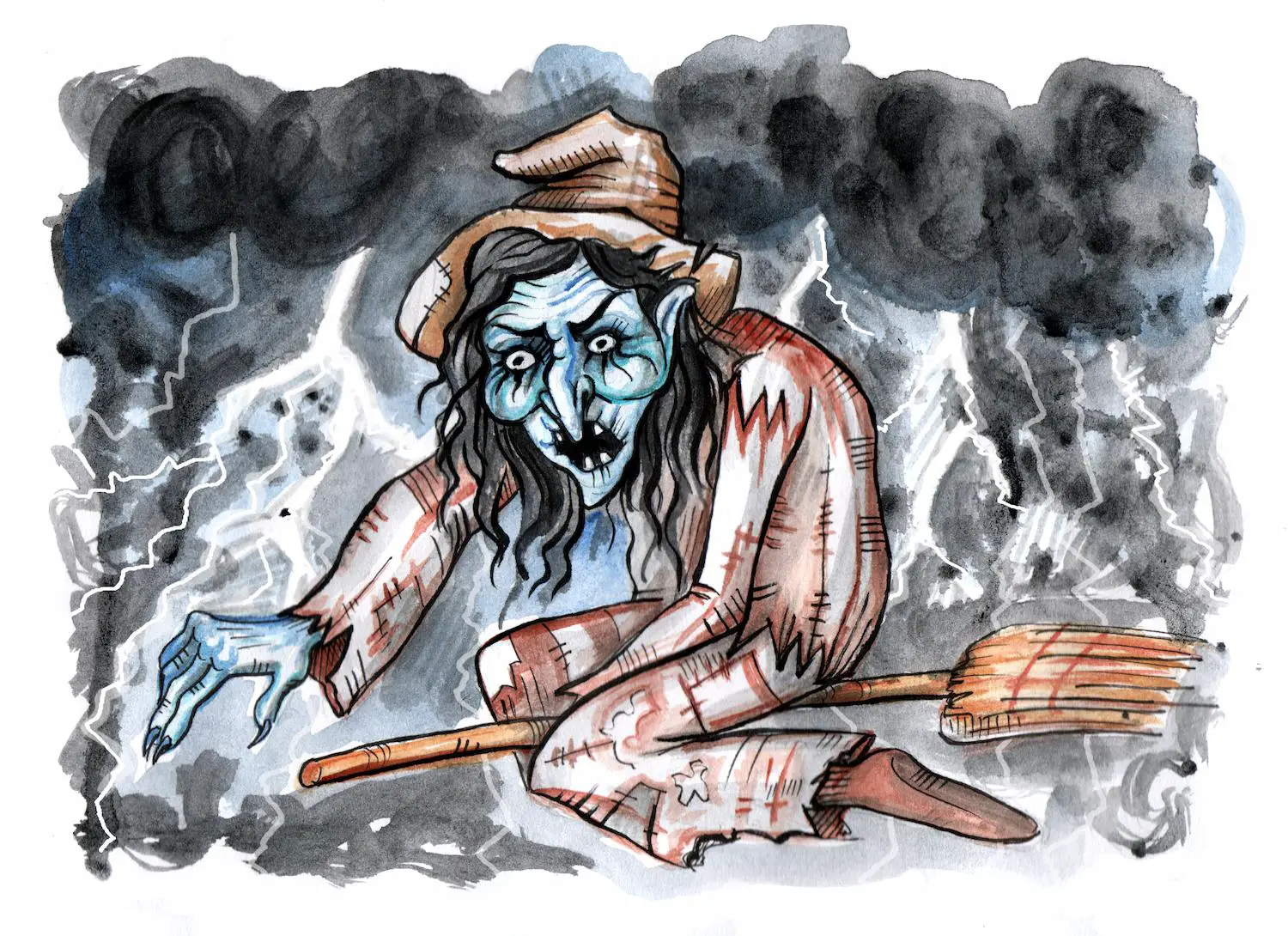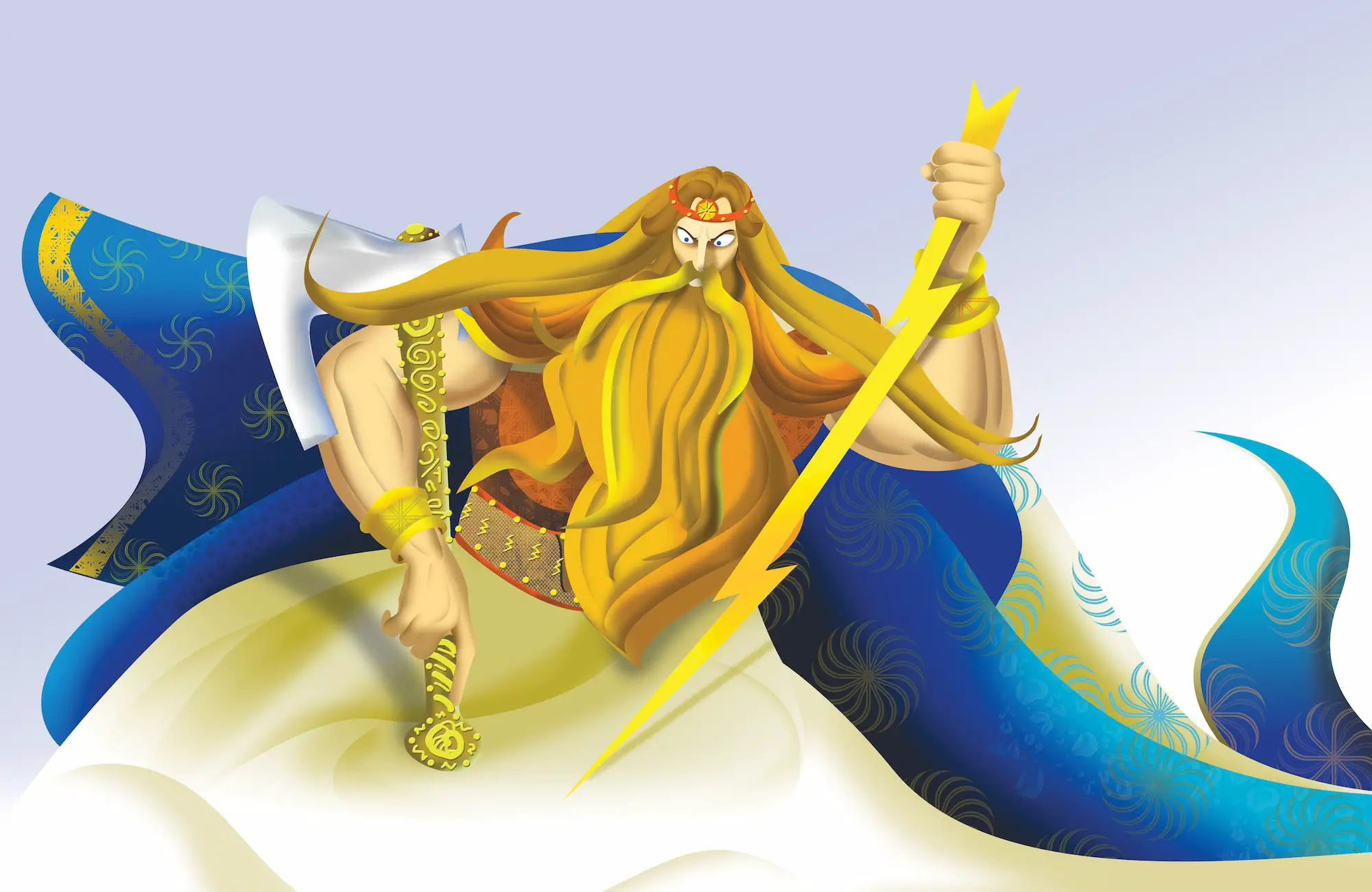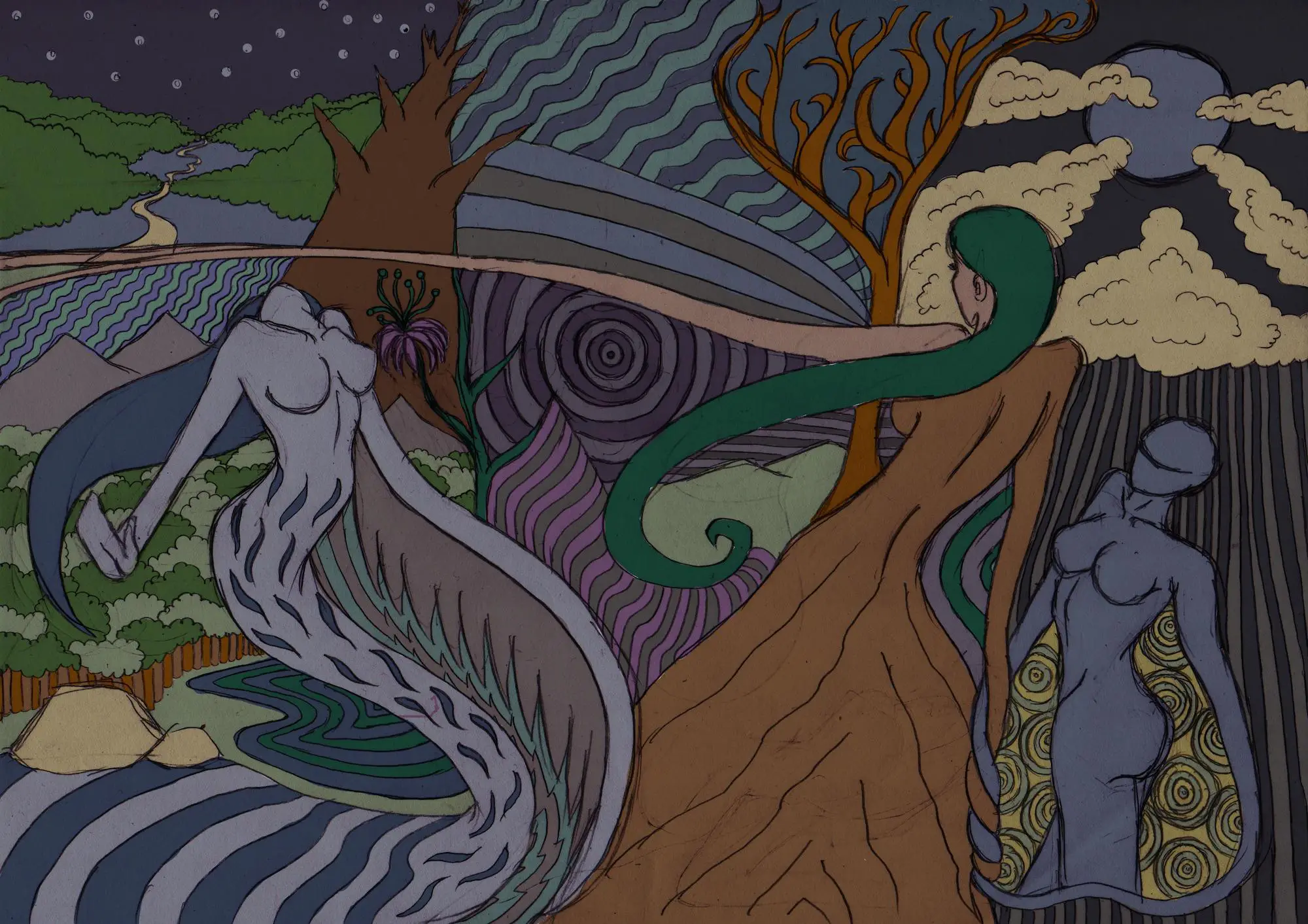We might not have a lot of written material to look at and read if we want to learn more about Slavic history and culture, but fortunately, Slavs all around the world love to tell stories and pass down the history of their people, so we still have a lot to go on.
Aside from all the rules and ways of life, we also have the stories and myths of creatures – both good and bad – to feed our imagination and help us understand how Slavs of the past perceived the world around them, and what was important to them.
Below, you can read a list of the top monsters in Slavic Mythology which are known to have caused headaches to Slavs throughout the continent, and even strike fear in some, but there are also some which although looked grotesque, did god and tried to help humans!
Table of Contents
Slavic Monsters
1. Azhdaya
The Azdaja might look like your everyday dragon or wyvern, but the history behind it is different.
It’s considered to be a demonic version of the dragon, said to have an odd number of heads, never even, and to be able to spit fire and cast a roar that would make everything tremble as far as the eye can see.
These mythical creatures lived high in the mountains, usually in caves, making them hard to reach. They came out when they were hungry, flying down to nearby villages to snatch cattle and cause harm to villagers.
2. Balachko
Balachko is a three-headed giant that spat fire from one head, and freezing cold winds from the other. He is one of the most interesting creatures from Slavic folklore.
The story has it that it could do this only for a limited amount of time, and once it exhausted both powers, it would become fairly easy to kill. How do we know this? Well, apparently a Russian Tzar managed to do it when a Balachko kidnapped a princess.
3. Bauk
This creature originates from the beliefs of Southern Slavs and their folklore. It’s considered to be one of those creatures that are dangerous to people and look to do them harm.
It spends most of its time lurking in dark places in abandoned houses or barns, where it would wait for wanderers to walk in. Then it would take them and eat them.
The good thing is, it can be scared away by light and loud noises, so have a fleshlight at hand when you decide to go exploring in haunted and abandoned houses.
4. Vodyanoy
Also known as Vodenjak, these creatures are known to reside close to water mills, and in ponds, swamps, and even lakes. They emerge from the souls of dead people, usually evil people who were not permitted to go to heaven by the gods.
A vodyanoy looked like an old man, but with long claws, body covered in moss, algae, and seaweeds, sometimes covered in mud or boasting a green beard.
These mythical creatures spent their days in lairs they had created, coming out at night to drag people into the lake or river and drown them. Sometimes they would even damage man-made structures near their lairs, like water dams, water mills, fishing nets, and piers.
Vodyanoy can sometimes be rude and dangerous, so try to stay away from riverbanks and shores at night.
5. Bannik
Bannik is a bathhouse spirit (yeah, we have those) that looks like a slim, small old man with a long beard and white hair. While this doesn’t look like a monster, it did have hairy clawed hands, and pointy, sharp teeth.
While they are considered to be benevolent, they are known for sometimes snatching away unattended babies from their mothers.
These mythical creatures from Slavic mythology would also use their claws to attack people (if angered).
If they scratched you with their claws without you seeing, it meant that a great misfortune would lie ahead of you.
6. Drekavac
A demonic creature that is created from dead, unbaptized babies. It’s depicted as a small, hairy creature with long fur and claws. It would attack with a loud shriek, resembling that of a baby in pain.
A Drekavac usually lives in graveyards, but it can also be found in areas where it has died. At night, it ambushes people by jumping on their backs and forcing them to run, but if the person resisted him, the Drekavac would attack the person’s face with its claws.
It was afraid of light and dogs, which caused it to flee right away while screaming very loudly.
7. Bolotnik
Bolotnik was a water monster that looked like an old man, had big, frog-like eyes, a green beard, and long hair. The body of a Bolotnik was covered in moss, seaweeds, and fish scales.
Similar to the Vodyanoy, it lured people into the water by making sounds like a duck, and when the person got close, it grabbed them by their limbs and dragged them to their death.
Unlike the Vodyanoy, it didn’t have a lair, and it could be found almost anywhere close to bodies of water.
8. Aspid
Similar to the Azdhaja, but it had more bird-like features. The Aspid was a bit smaller, had one head, a beak, and a very long neck.
It usually preferred solitude and resided in the mountains. It rarely came down from mountains, but when it did, it was rarely for food – it came and spat fire and destroyed anything in its path, usually burning and ravaging whole villages.
9. Leshy
A large, humanoid monster that serves as a protector of forests and all the plants and creatures that live in them. Leshy picks a forest, and makes it a home.
Leshy looks like a big, old man, with blue cheeks (blue blood is running in its veins), and it has superhuman strength and is very fast. It can take the shape of any person or animal, and is very hard to notice.
Usually, a Leshy will not harm humans that walk through its forest, but since it has a strong connection to its forest, it feels pain when a tree is cut down or when someone brings harm to its habitat, it goes into a frenzy and makes a loud noise which can cause rainstorms.
If you happen to be the one that hurts its habitat, we have only one piece of advice for you: Run as fast as you can, because Leshy will eat you if it gets its hands on you!
10. Chort
A Chort is a creature that is anthropomorphic. It looks very similar to depictions of the Devil in early Christianity – a human-like monster with goat hooves, horns, and a tail.
However, the characteristics and doings of a Chort make it both good and bad. In some stories, it’s a demonic creature that brings misery and misfortune to anyone who encounters it, sometimes even destroying their house or whole property.
In others, it’s presented as a good spirit that befriends heroes or travelers, often giving them magical items to help them in their travels or adventures.
11. Bukavac
The Southern Slav take on the Vodyanoy.
Its origin is similar to the origin of Drekavac, and they have similar abilities, but unlike the Drekavac, the Bukavac lives near swamps, lakes, rivers, and ponds. It has a lair, and like the Vodyanoy, it likes to drag people into the water if they walk close to the shore.
However, the Bukavac looks nothing like the Drekavac or the Vodyanoy. It has six legs, skin covered in slime, big curvy horns, a big mouth, and a very long tail.
12. Vampir/Upyr
Vampir, or as they’re known in Slavic lands – Upyr – are the original vampires, and don’t let anyone tell you any different.
The Western stories of vampires stem from Slavic folklore but the modern idea of the vampire is vastly different from the idea the Slavic people had in the past.
Vampires were not aristocracy nor did they mix among people. They did however like to suck blood and were extremely violent towards people. No fancy clothes either – they wore whatever they were buried in.
They weren’t gentle at all – they didn’t have just two fangs, they sucked blood with all their teeth, and sometimes even ripped the victim’s throat and in some cases even mutilated their bodies.
How did they get rid of them? A stake through the heart, and cutting their head off [1].
This was usually done during the day, when the vampir slept.
Also Read: Serbian Vampire Sava Savanovic
13. Strzyga
A Strzyga, also known as Striga, was a female demonic creature that was somewhat similar to the vampire.
It is believed that people born with two hearts had two souls, and sometimes even two sets of teeth, and that these were destined to become strigas. When a person is identified as a striga, they are chased away from the village.
Sometimes they were even buried alive, but if they weren’t buried properly, they came back and haunted the people nearby. At night, they would come out from their graves, and take the appearance of an owl and fly, often attacking travelers and people they saw.
If a striga attacked a person, it would suck that person’s blood, and sometimes even feast on its insides.
How to prevent a person destined to become a striga from haunting you or your beloved ones? By doing some the following:
- Burn their body;
- Pierce their body with nails in various places;
- Digging out their body after they were buried, and put flint into their mouth;
- Putting various small objects in the striga’s grave, which will force the striga to count them and not get out;
- Scattering poppy seeds in the shape of a cross around your house;
- Slappin it across the face with your left hand;
The Bottom Line
Some of these monsters resemble monsters we’ve already encountered in other cultures, but one thing is for sure – Slavs had a wild imagination, and also managed to really go deep to explain some natural phenomena and some human diseases and conditions.
Mythical or not, these creatures were scary, and considering that all these stories and legends about monsters have managed to stay relevant after all this time, one might think – is it really that crazy? Could there be something to these stories?
Whatever the truth, we should be thankful for our rich history and culture which gives us a glimpse into the mind of your average Slav living a millennium ago.
Sources
- https://culture.pl/en/article/polish-vampires-bloody-truth-behind-dark-myth







